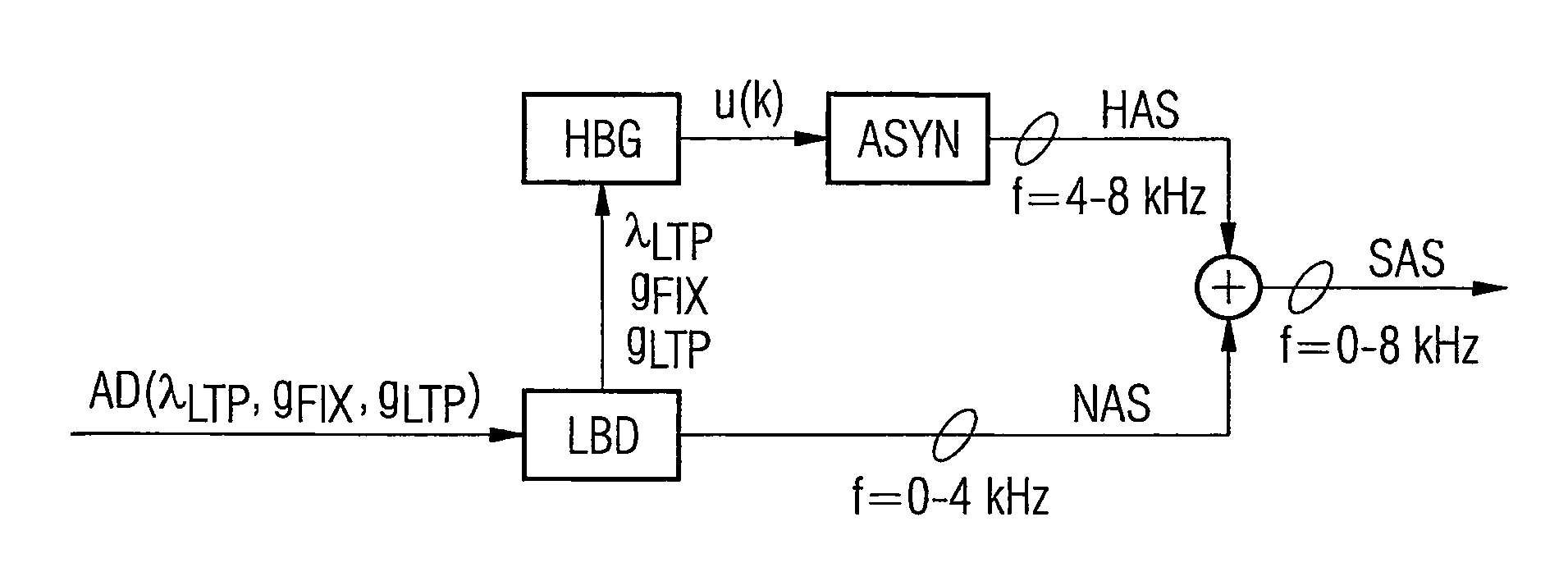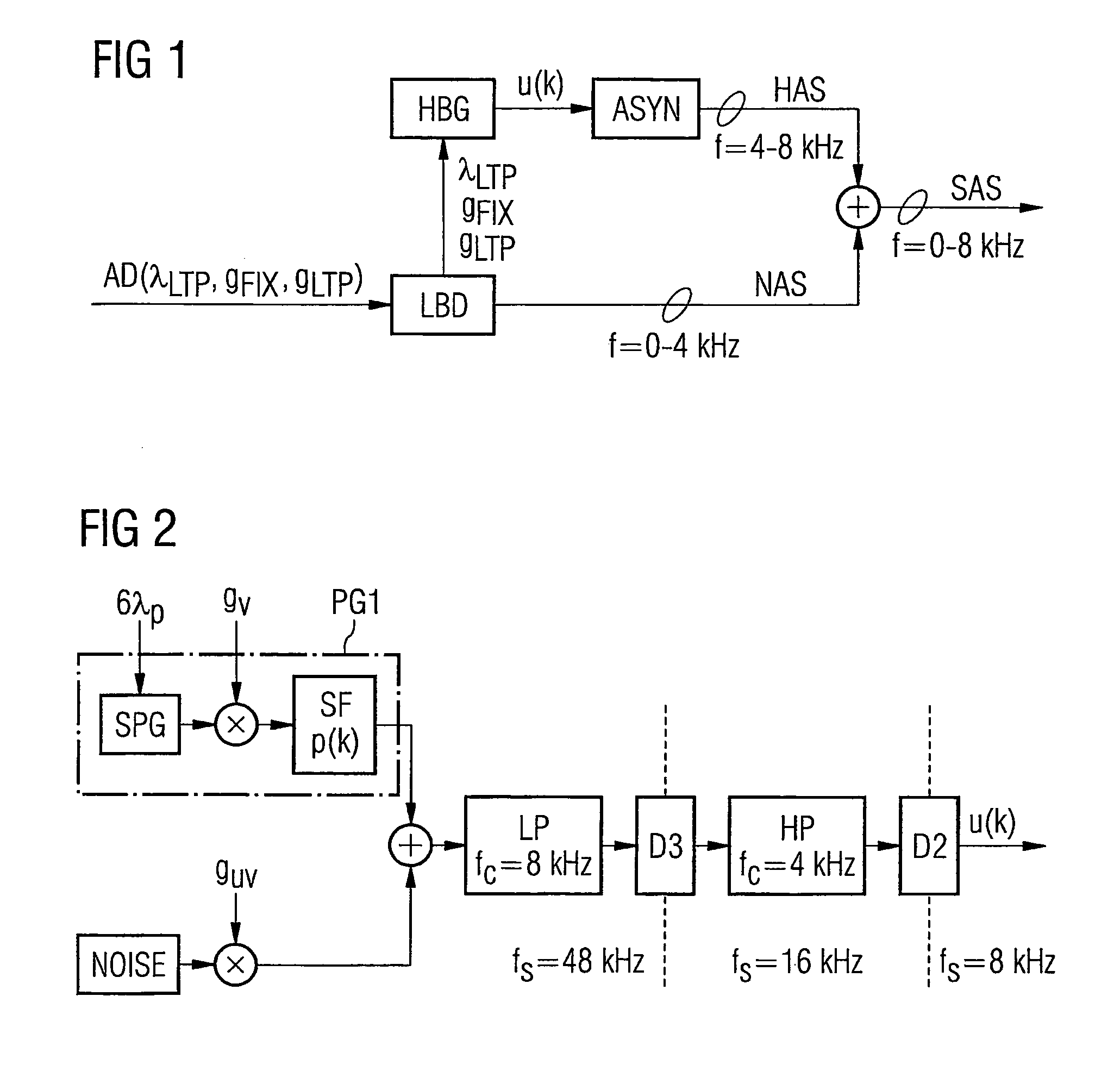Method and arrangements for audio signal encoding
a technology of audio signal and arrangement, applied in the field of method and arrangement of audio signal encoding, can solve the problems of limited transmission bandwidth available for real-time audio transmission, significant audible phase error, spectrum distortion of excitation signal, etc., and achieve the effect of reducing the proportion of tonal audio signal and general improvement of reproduction quality
- Summary
- Abstract
- Description
- Claims
- Application Information
AI Technical Summary
Benefits of technology
Problems solved by technology
Method used
Image
Examples
first embodiment
[0078]A first embodiment variant of the excitation signal generator HBG is shown schematically in FIG. 2. The embodiment variant shown in FIG. 2 features a pulse generator PG1, a noise generator NOISE, a lowpass LP with cut-off frequency fc=8 kHz, a decimator D3 with decimation factor m=3 (or generally m=N), a highpass HP with cut-off frequency fc=4 kHz as well as a decimator D2 with decimation factor m=2. The noise generator NOISE preferably creates white noise. The pulse generator PG1 on the one hand includes a square-wave pulse generator SPG and a pulse-shaping filter SF with a predetermined filter coefficient set p(k) of finite length. While the noise generator NOISE is used to create the atonal components of the excitation signal u(k), the pulse generator PG1 contributes to creating the tonal components of the excitation signal u(k).
[0079]The audio parameters gv, guv and λp are derived and adapted for each time frame in a continuous sequence from audio parameters of the lowband...
second embodiment
[0089]A second embodiment variant of the excitation signal generator HBG designed in this way is shown schematically in FIG. 4 and will be explained below. The embodiment variant shown in FIG. 4 features a pulse generator PG2 as well as a noise generator NOISE preferably generating white noise. The pulse generator PG2 on the one hand comprises a pulse positioning device PP as well as a lookup table LOOKUP, in which predetermined pulse shapes vj(k) are stored. While the noise generator NOISE is used for creating the atonal components of the excitation signal u(k), the pulse generator PG2 contributes to creating the tonal components of the excitation signal u(k). Both the noise generator NOISE and also the pulse generator PG2 directly use the target sampling rate of fs=8 kHz.
[0090]The excitation signal generator is supplied with the audio parameters gv, guv and λp for each time frame in a continuous sequence. The derivation of the audio parameters gv, guv and λp has already been expla...
PUM
 Login to View More
Login to View More Abstract
Description
Claims
Application Information
 Login to View More
Login to View More - R&D
- Intellectual Property
- Life Sciences
- Materials
- Tech Scout
- Unparalleled Data Quality
- Higher Quality Content
- 60% Fewer Hallucinations
Browse by: Latest US Patents, China's latest patents, Technical Efficacy Thesaurus, Application Domain, Technology Topic, Popular Technical Reports.
© 2025 PatSnap. All rights reserved.Legal|Privacy policy|Modern Slavery Act Transparency Statement|Sitemap|About US| Contact US: help@patsnap.com



